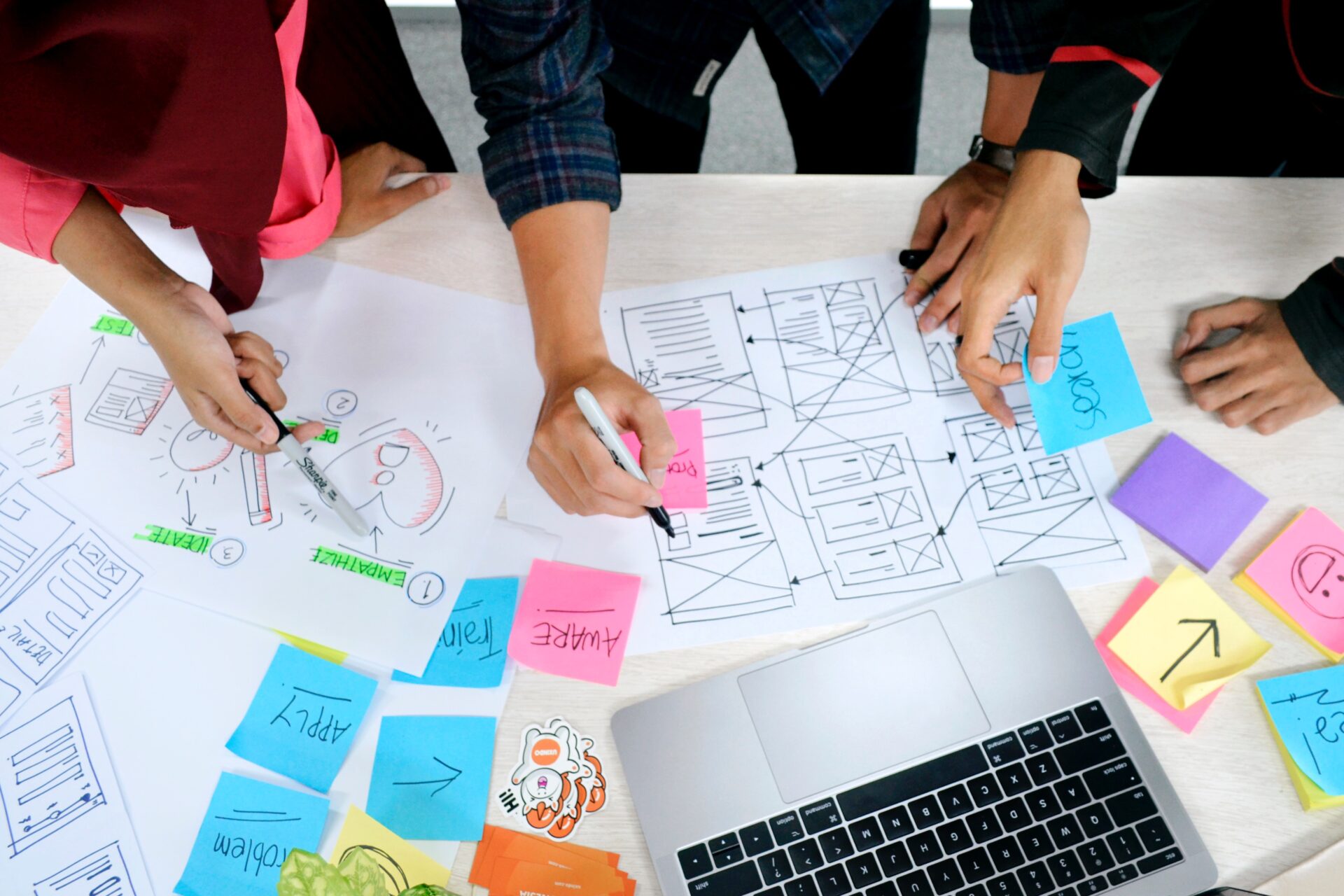How do you create a product that your end-users will really love
Often, an outdated UX (user experience) is the cause of stagnant growth. If you want the success of your digital product to increase again, it is essential to look at the product’s UX. The foundation of your digital product’s success lies in your development team, but transforming your development team into one that is more focused on UX requires a change in mindset. How do you make sure your team embraces this mindset?
In this article, we provide 5 key tips to achieve this. Read on and find out how to unleash the maximum potential of your digital product.
IN THIS ARTICLE:
“Companies who don’t give priority to user experience (UX), generate 50% less profit than their competitors.”
1. Raise awareness about the importance of UX
Educate your team about the importance of UX. Organise workshops or training sessions led by UX experts. This can cover understanding the fundamentals of user-centred design, UX research, interaction design, information architecture and usability testing. Make sure everyone, including developers, designers and product managers, understands the basics of UX and how it affects product success.
2. UX expertise as a permanent part of your team
If your budget allows, it is highly recommended to hire UX professionals. These experts, such as UX Researchers, UX Designers or Interaction Designers, bring valuable knowledge and skills that are crucial for creating an optimal user experience. They are trained in conducting in-depth research, identifying user needs and designing intuitive and engaging interfaces.
Hiring UX professionals brings many benefits. They can help your team develop a UX-driven mindset and ensure that UX principles are applied throughout the development process. They are well-versed in the latest trends and best practices in the field, and can provide valuable input when making decisions and design choices.
However, if recruiting or hiring this expertise is not feasible, consider assigning UX responsibilities to existing team members who show interest or aptitude in this area. They can act as UX champions within the team and ensure that UX principles are applied throughout the development process.
3. User-centric approach
Make the user and their needs the absolute focus of your design and development process. By using techniques such as personas, user stories and user journeys, you can gain a deep understanding of users and their specific needs and goals. This allows you to accurately guide feature development and ensure that every aspect of your product is focused on delivering maximum value to users.
Personas provide a powerful means of representing different types of users. By creating fictional characters that reflect the characteristics and behaviours of your target audience, you can better empathise with their perspective and needs. User stories are concise, user-centred descriptions of functionalities or tasks that the product should support. They provide a clear and shared understanding of what the user wants to achieve and why. User journeys are visual representations of the steps and interactions a user goes through when using the product. They provide a holistic overview of the user experience and help to understand the context in which the product is used.
It is crucial to regularly consult these user-centric tools during the design and development process. They serve as a compass and reminder of users’ needs and goals. By actively using them, the team keeps users at the centre and can make the right choices that improve the user experience.
4. Conduct regular user testing
Don’t wait until the end of the development cycle to gather user feedback. There is a much more effective approach: iterative design and testing. This approach allows you to test ideas and prototypes early and often with real users, even before the product is fully developed.
By integrating iterative design and testing into the development process, you can continuously collect and evaluate valuable feedback. This allows you to identify potential usability issues and bottlenecks before they grow into bigger and more costly problems in the future.
The beauty of this approach is that you can react quickly to the findings and make improvements immediately. By regularly testing and incorporating the feedback, you can continually refine your product and tailor it to users’ needs and expectations. This ultimately leads to a better user experience and higher satisfaction.
5. Measure UX and set UX goals
Measuring user experience and setting UX goals is essential for the success of your product. It is time to put UX forward as a key KPI (Key Performance Indicator) in your strategy. Go beyond intuition and gut feelings and base your decisions on hard facts and figures.
How do you measure UX? Look at user satisfaction scores, task success rates, error rates and time taken to complete a task. Regularly analysing these measurements as a team will give you valuable insights on the current state of the user experience.
This transformation does not happen overnight. It requires patience, perseverance and dedication to put the user at the centre of everything you do. It can be challenging at times, but the reward in terms of product success and user satisfaction will be more than worth it! Would you like to spar together about what possibilities there are for your product? In a short discovery call, we would love to see what we can do for each other.
Ready for next level product development?
Let's create a digital product that end users and business stakeholders will love and that is also future-proof, scalable, secure and easy to maintain.

 6 min
6 min 



